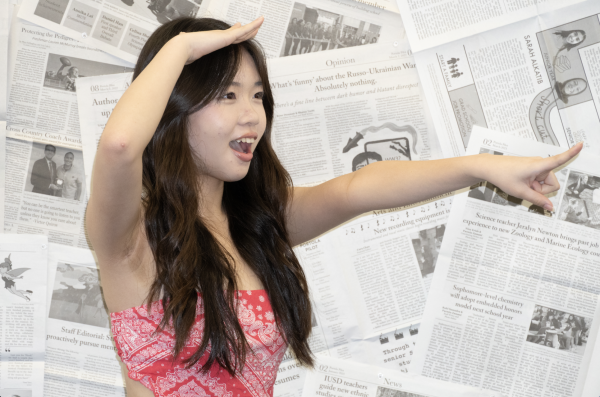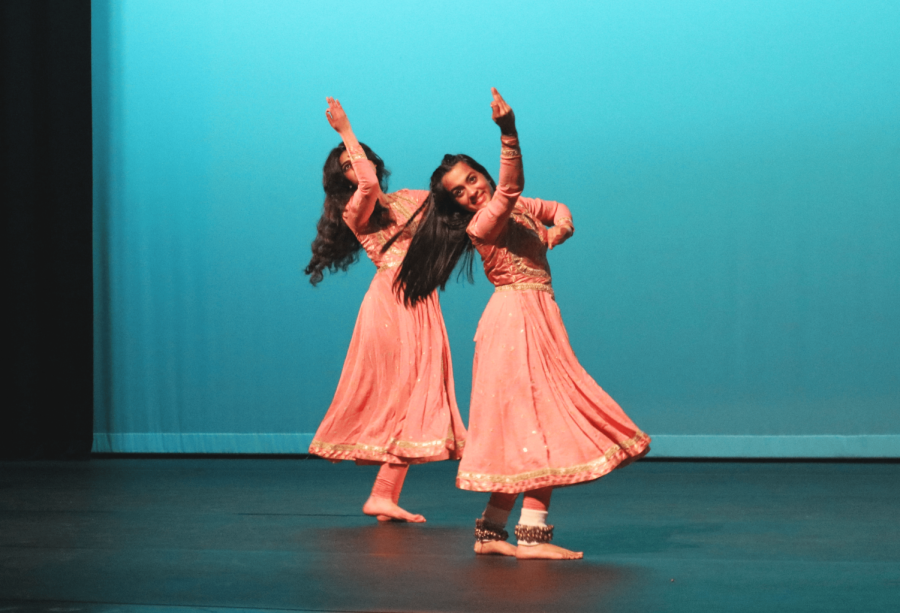Indian Classical Dance Brings Dancers Back to Their Ethnic Roots
Junior Smira Sonthalia and junior Koyna Bhagat rehearse their duet to the song “Sun Saathiya” for the “Vertigo” dance concert on March 22. The audience listens to the rhythmic jingling of the ghungroos attached to their ankles, which draws attention to their detailed footwork, according to Sonthalia.
Hair wreaths adorned with delicate flowers and ghagras embroidered with intricate patterns are just some of the highlights of a typical Indian classical dance performance. These clothing pieces enhance the dancers’ movements and tie in cultural heritage, according to junior Smira Sonthalia.
“Ghagras are something that is worn for weddings,” Sonthalia said. “We have these flowy skirts that spin as you spin, and every spin adds this new factor of excitement, which is the most beautiful thing about Indian classical dance. I think that is why our dances are so unique.”
Indian classical dance incorporates emotional storytelling based on religious and mythological tales, which dancers emphasize through their captivating facial expressions, according to junior Aditi Venkataraman. Indian classical dance is also known for its precise movements and complex footwork that require determination to master, according to sophomore Sahana Ananth.
“Because it is a very technical style of dancing, you need to make sure you have all the footwork down and all the hand movements,” Sonthalia said. “You need to have everything be perfect. Otherwise, you are going to stand out from people, and the dance style is all about being in unison.”
While the style originated in India, classical dance is a long-standing art form appreciated by many dancers worldwide. For Venkataraman, dancing has allowed her to recapture her childhood memories in India and reflect on them fondly in the United States.
“Because it was something that I did while I was in India, too, dance can take me back to those days and connect me to my family in India,” Venkataraman said. “It has helped me stay in touch with them, and even if I don’t talk to my family in India as much, they see my dancing through videos and are excited for me.”
For others, classical dance opened their eyes to the vibrancy of Indian culture and instilled pride in their ethnic identities. Sonthalia said that her years of experience in the dance style enabled her to express herself and realize the beauty in her people.
“Especially since I grew up in a predominantly white area, I think that Indian classical dance is something I did not want to embrace,” Sonthalia said. “But as I have done it, it has given me confidence and been a safe space for me to be in my own skin. I feel like it has helped me realize that I should just be proud of my culture and just how beautiful and graceful we really are.”
Your donation will support the student journalists of Portola High School. Your contribution will allow us to purchase equipment and cover our annual website hosting costs.

Madeline Chung is the Arts and Entertainment Editor for her second and final year on the Portola Pilot. When she is not complaining about how terrible...




